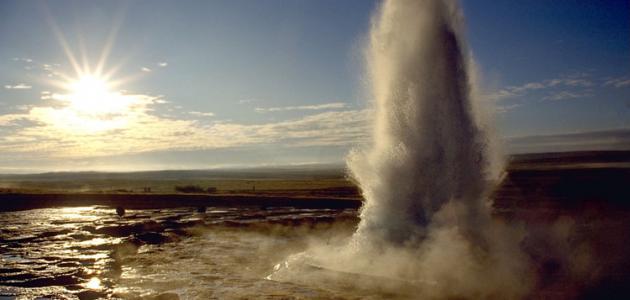Natural phenomena
There are many forms of distinctive natural phenomena in the atmosphere surrounding us, and these phenomena are worth watching and searching for a scientific explanation for, and among the forms of phenomena that occur at certain periods are the formation of rainbows and the formation of mirages, and there is another type of phenomena that is permanently present around us, and perhaps not. We pay attention to it like others, as it can be seen on all days, such as seeing the sky in blue, and seeing it in red at sunset, and there are many questions surrounding it that need a scientific basis to explain it, such as why is the color of the sky blue? Why is the night black? What is the actual color of the sky? How does the sky become red at sunset?
The reason for seeing the sky blue
When we watch the sky during the day and when the weather is clear, we see it in its blue color. Over a long period of years, it was believed that the reason for the blue color of the sky results from the diffusion (diffraction) of the light passing through it, and this diffusion occurs as a result of the presence of dust particles that are suspended in the atmosphere, and in Some beliefs imposed that the atmosphere was free of dust and very pure. The hypothesis of the spread of light was not effective and correct, as the atmosphere does not spread light.
In the year 1899 AD, the scientist Relig found the true and correct explanation that explains, on a scientific basis, the reason for the spread of light. This reason results from the same air molecules present in the atmosphere. The atmosphere is affected when sunlight passes through it, and it is illuminated with white light until it meets one of the air molecules (nitrogen). And oxygen), then this light decomposes into different colors, and then the air molecule consisting of nitrogen and oxygen atoms absorbs the radiation (or what is known as color) and then reflects it in all directions. When this happens, the intensity of the light stops and its wavelength varies (causing the color), and thus it appears to us A different color when the viewing angles are different. Standing at a 90-degree angle gives us a different color than the color we see when viewing from a 120-degree angle, for example. Therefore, we see the sun in its red color when we are in the axis of illumination, and we see the color blue when we are in the axis perpendicular to the axis of illumination. The outgoing light collides with the molecules in the air (oxygen and nitrogen) and this phenomenon continues to repeat. The outgoing light turns toward illumination and is rich in red, and in contrast, the color coming from the side is richer in blue, and this is how we see the blue color of the sky.
Read also:What is an earthquakeHowever, if we live on a planet that does not have an atmosphere, no deviation of the sun’s rays will occur, and thus the sun will be black when viewed, and the stars and moon will appear to be the only bright objects in the sky.
The reason for the redness of the sunset
When we look at sunset, we are in the direction of the same axis of illumination. Therefore, according to what was mentioned previously, the light coming out is rich in red and very poor in blue. This results in us seeing the sun with a redder degree than it actually is, and the thickness of the atmosphere surrounding the Earth in the morning is Small, and when the sun sets, this thickness increases, and the effect becomes clear with the difference in the thickness of the atmosphere, so it appears to us that the sun is a red color and the atmosphere also appears to be the same color.
Read also:What is the mystery of the Bermuda Triangle?What is green ray?
When suitable weather conditions exist, it is possible to see a green ray at sunset and just before the sun disappears, directly on the horizon.









